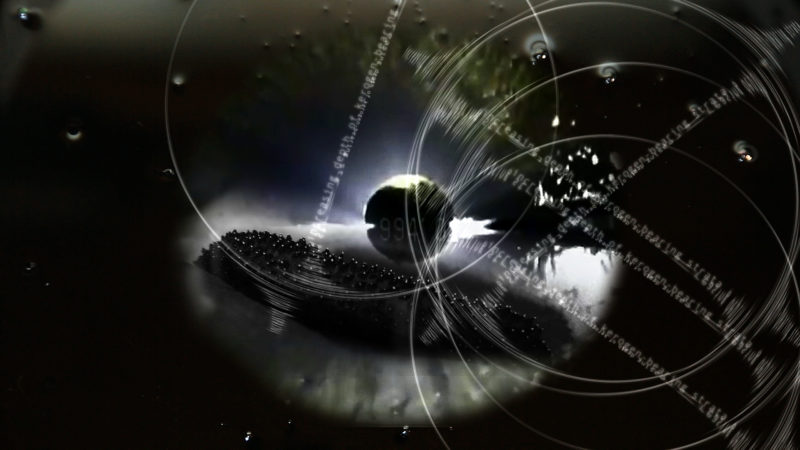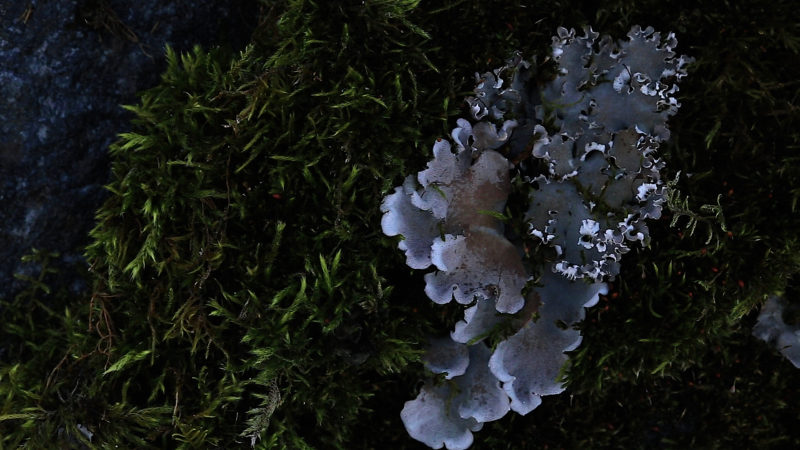13 Mar 2018
Interview
SPEAKING SPACE WITH CAROLINE DOOLIN
Caroline Doolin from Dublin, Ireland, is working on the island of Suomenlinna for six weeks. Her practice is based on moving image installations, film, animation and sound. Her work is extremely imaginative, and it tries to interpret and translate spaces and thoughts foreign to humans. Her work often combines a voice-over narration with animation and film, and it is usually presented in an installation context in a physical, constructed space.
Caroline’s work Fault Bound Bodies, for example, is described as a narrated interspecies love story, in which the story evolves from the imaginary perspective of a geothermal site. In a way, it is a cheesy and sentimental interpretation of original material, in which the combination of animation and voice-over narration manages to give an almost documentary and scientific feeling.

In other works, such as Of oil and origin, Caroline uses the same technique of combining film, voice-over narration and animation to tell a story from the space’s perspective, the space being where the story takes place. How does space experience time, for instance? She admits that human vocabulary has its limits, and trying to describe in human vocabulary the experiences of something altogether different, such as space, can be challenging. “I don’t speak space the way space speaks space.”
Caroline sometimes installs her film work differently in different contexts. That way she feels she can communicate different aspects of the research behind the work. By changing the installation, she feels that she can orchestrate the experience of the viewer more than just a screening of her work could.
While at HIAP, Caroline is planning to keep working in film, but she is also thinking about moving away from linear narratives.

AA: Caroline, what are you most hoping to accomplish during your HIAP residency?
CD: During my residency at HIAP I am researching and filming for a new video installation. The work will draw on Suomenlinna’s status as a UNESCO heritage site, using that status as a lens through which to explore the island’s everyday and perhaps overlooked aspects.
AA: Your work often deals with questions of energy, physical and emotional. Are you looking forward to discussing these issues with your fellow HIAP residents?
CD: I do look forward to discussing these subjects while at HIAP, particularly in relation to the varied interests and perspectives of the other residents. Already during my time here, some brief conversations have arisen around these issues and more broadly around the intersection of the human and the ‘non-human’. These conversations have often led to questions of what might be suitable vocabularies to discuss these concerns, without resorting to anthropocentric categories such as human and ‘non-human’. One really interesting thing for me has been to hear from residents and staff about the nuance the Finnish language affords such discussions, which the English language may not. I am interested to find out more about this during the remainder of my stay.
AA: In your work, even though there’s a narrator who takes the story forward, there is no protagonist in the traditional sense. Can a space be a protagonist? Can rocks?
CD: I think a space or rocks can be protagonists, but as you say: not in the traditional sense.
However, the idea of a protagonist, in its most restricted sense, is limiting in that it emphasizes individual rather than interrelated experiences as the central or driving force of a narrative. There are restrictions to how effectively the tools used to articulate a human or anthropomorphised protagonist in one location can be otherwise or elsewhere applied. In the sense that a protagonist is specific to and motivated by their own context, location and history; rocks, birds, plants, etc. are also context specific and nuanced.
So the question for me is not so much whether or not a space or rocks can be protagonists, but what are the means through which those protagonists ‘speak’ to and with an audience who do not necessarily share their ‘vocabularies’.
This provides some of the rationale behind my initial proposal to HIAP and my attempt to find new (for me) approaches to making video installation without a linear, narrative structure.
AA: Where do you start, when making a new work? The scripted narration?
CD: In previous works, I have started with a long period of research throughout which I was writing and rewriting the scripted narration. At a later stage in this process I would begin to film at particular locations and this in turn would influence further edits of the narration.
However, I think that this approach has reached a point of stagnation for me and poses many limitations on how to think about a particular location or material. During my residency at HIAP I am developing new work without a scripted narration. For this work I began to film almost immediately on arrival at HIAP.
I travel to Suomenlinna daily or every second day. I walk around the island and I record various things that I observe. In the evenings or on the days that I do not travel to Suomenlinna I review this footage, edit it together with sound and decide what other footage I might need to gather on my next trip to the island.
Without the structure of a pre-defined script it is a slow process – one which is frequently permeable to chance and external influence – but one which offers many fruitful and positive frustrations.
